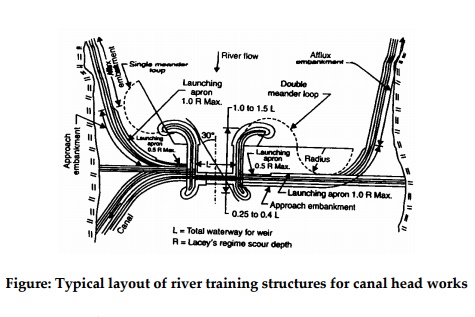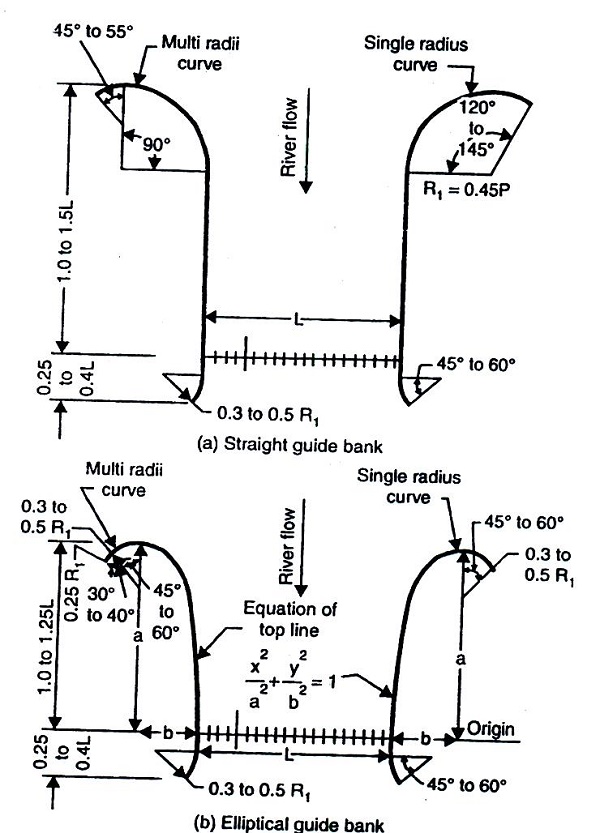Chapter: Civil : Water Resources and Irrigation Engineering : Diversion and Impounding Structures
River Training For Canal Headworks
RIVER TRAINING FOR CANAL HEADWORKS
Giver training structures for canal head works are
required for the following purposes :
i.
To
prevent outflanking of the structures,
ii.
To
minimize possible crossflow through the barrage of weir which may endanger the
structure and protection works.
iii.
To
prevent flooding of the riverine lands upstream of the barrages and weirs, and
iv.
To
provide favourable curvature of flow at the head regulator from the
consideration of entry of sediment into the canal.
The following types of river training structures are
usually provided for weirs (13):
(i)
Guide
banks,
(ii) Approach embankments
(iii)
Afflux
embankments, and
(iv)
Groynes
of spurs.
The
purpose of guide banks is to narrow down and restrict the course of a river so
that river flows centrally through the weir constructed across it without
damaging the structure its approaches. The alignment of guide banks should be determined
such that the pattern flow at the head regulator induces favourable curvature
of flow minimizing sediment entry the canal system (19). More details of guide
banks have been included in Chapter 12 and typical sketch of river training
structures provided at weirs and salient details of guide likes are given in
figure and . While constructing weirs on alluvial rivers, the natural byway is
restricted from economic and flow considerations, and the unabridged width of
is blocked by means of approach embankments. Depending upon the distance
between guide bank and the extent of the alluvial belt, the river may form
either one or tow meander. The approach embankments, aligned with the weir
axis, should extend up to point beyond the range of the worst anticipated loop.
Afflux embankments are earthen embankments which extend from both the abutments the approach embankments) and are connected on the upstream to the ground above the axed highest flood level (or to flood embankments, if existing).

Figure:
Typical layout of river training structures for canal head works

Figure: Geometrical shape of guide
banks.
A top width of about 6 to 9 m and freeboard of
1.0 to 1.5 m above the highest flood level for a 1in500 years flood) are
usually provided for these river training works (19). Besides, stone pitching,
launching aprons, etc. are also provided in the usual manner as described.
Related Topics